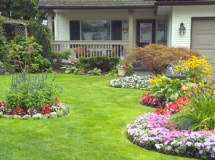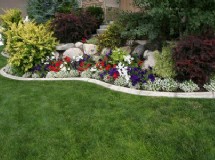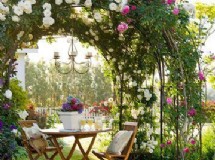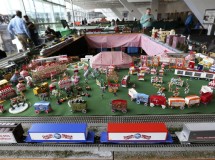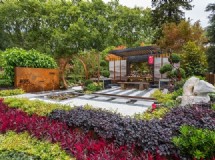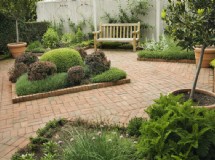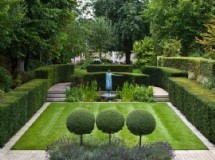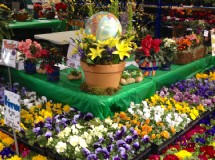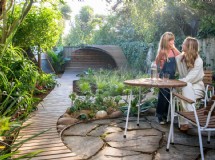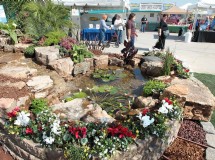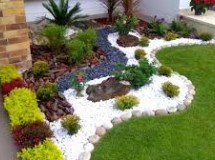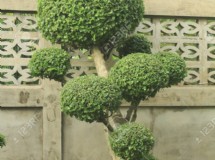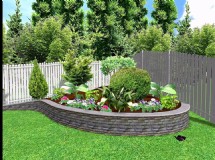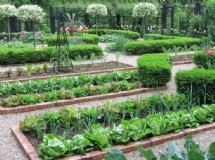Orangery is a building that is used to grow citrus fruits in the cooler regions. These are majorly found in Europe. These were first made in Italy, when the technology of making glass was developed enough to make clear sheets of glass. Among the Dutch the orangeries were considered to be a status symbol among the wealthy. Earlier the roofs were solid but in the early 19 century they were made out of glazed glass.
The orangeries are not just greenhouses but were considered as a symbol of wealth. Owners would take their guests on a tour of their garden to let them admire the architecture. Often these structures would have grottos, fountains and an area to entertain the guests. When the first greenhouses were built in the 15th century they were not a piece of architecture, but towards 1648 they were considered fashionable.
These were basically built to provide shelter to the delicate plants and also as a status for the wealthy. The material varied with the directions in which the orangeries faced, if they were south facing then the bases were made of bricks and stone, and had large glass windows to benefit them from the falling sunlight. In case they were north facing there were smaller windows, and larger walls to keep the place warm.
Early orangeries were removable during summers. Most of them used the garden wall as the support for the structure, but as they became popular garden designers were hired to design them. The involvement of architects and garden designers for making glasshouses further increased the demands of the wealthier to have their own private gardens. This increase in demand brought many innovations in the building techniques like opening windows made in the roof for ventilation purposes and under floor heating. These gardens were being made all around Europe making producing microclimates to bring in more exotic plants. Some of the most prominent orangeries in Europe are in Austria, France, Belgium, Sweden, Russia, and Germany.
The orangery made in the Kensington Palace is one of the oldest surviving structures made in Britain. It was made with a solid roof which kept the level of sunlight entering the structure low due to which it was not much successful.
The one in Margam Park in Wales was used to house a large variety of orange, citron and lemon trees. This is the longest orangery in Wales.
In Kenwood house, London there is an orangery dating back to 1700. Some other orangeries that are being handled by the national trust are in Suffolk, Worcestershire, Devon, Montgomeryshire, Norfolk and Northumberland. The most recent one was constructed at Dorset in the year 1970. Hence, if you want to transform your existing property with something lavish, then an orangery is your best bet.
The orangeries are not just greenhouses but were considered as a symbol of wealth. Owners would take their guests on a tour of their garden to let them admire the architecture. Often these structures would have grottos, fountains and an area to entertain the guests. When the first greenhouses were built in the 15th century they were not a piece of architecture, but towards 1648 they were considered fashionable.
These were basically built to provide shelter to the delicate plants and also as a status for the wealthy. The material varied with the directions in which the orangeries faced, if they were south facing then the bases were made of bricks and stone, and had large glass windows to benefit them from the falling sunlight. In case they were north facing there were smaller windows, and larger walls to keep the place warm.
Early orangeries were removable during summers. Most of them used the garden wall as the support for the structure, but as they became popular garden designers were hired to design them. The involvement of architects and garden designers for making glasshouses further increased the demands of the wealthier to have their own private gardens. This increase in demand brought many innovations in the building techniques like opening windows made in the roof for ventilation purposes and under floor heating. These gardens were being made all around Europe making producing microclimates to bring in more exotic plants. Some of the most prominent orangeries in Europe are in Austria, France, Belgium, Sweden, Russia, and Germany.
The orangery made in the Kensington Palace is one of the oldest surviving structures made in Britain. It was made with a solid roof which kept the level of sunlight entering the structure low due to which it was not much successful.
The one in Margam Park in Wales was used to house a large variety of orange, citron and lemon trees. This is the longest orangery in Wales.
In Kenwood house, London there is an orangery dating back to 1700. Some other orangeries that are being handled by the national trust are in Suffolk, Worcestershire, Devon, Montgomeryshire, Norfolk and Northumberland. The most recent one was constructed at Dorset in the year 1970. Hence, if you want to transform your existing property with something lavish, then an orangery is your best bet.
SHARE


